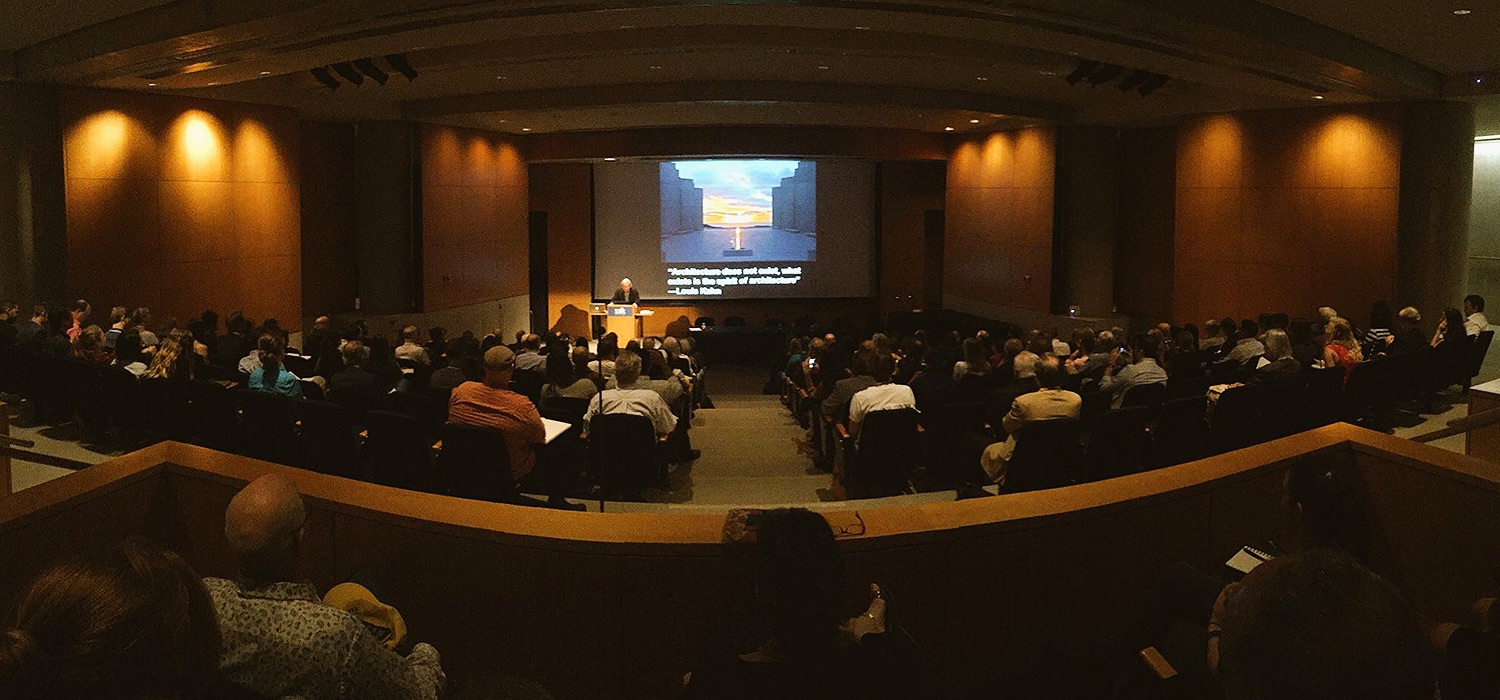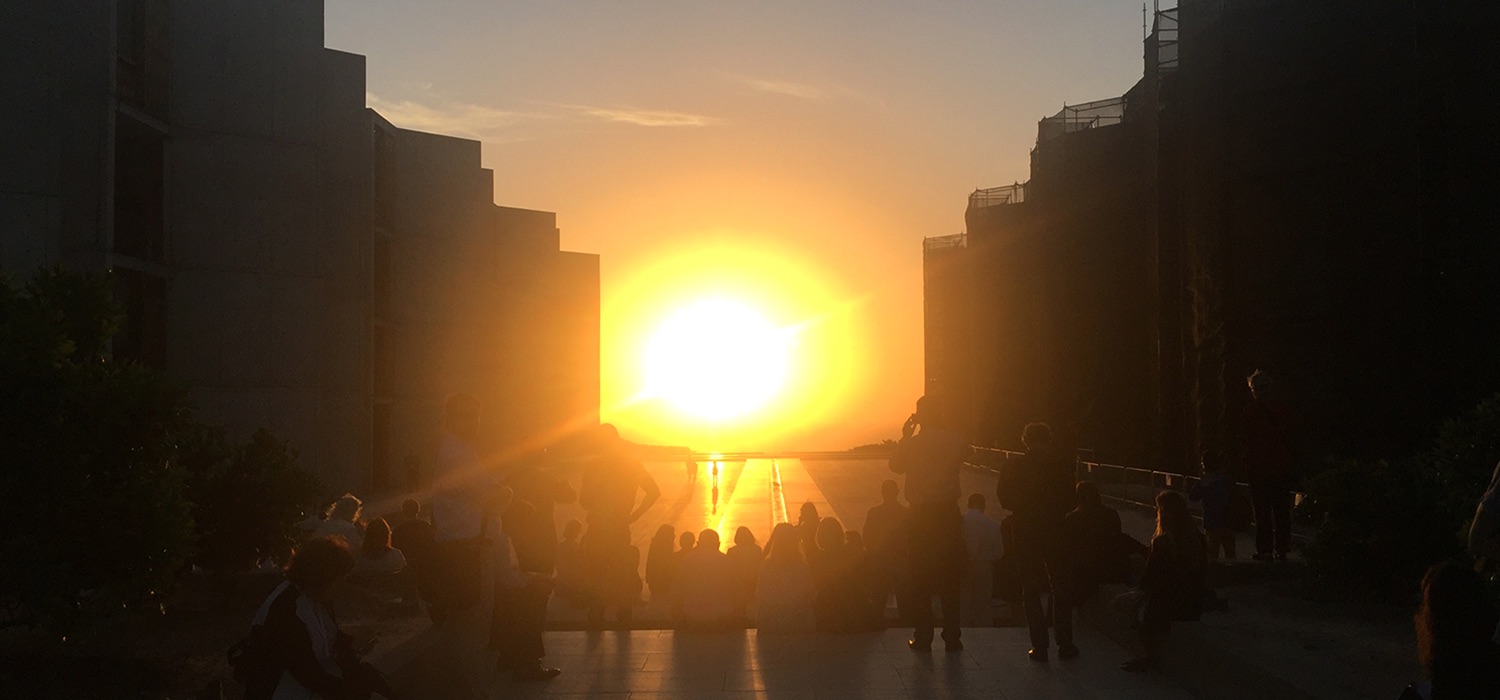The Academy of Neuroscience for Architecture explores the link between cognitive neuroscience and the built environment.

Humans spend the vast majority of their lives indoors, making architecture an undeniable and substantial actor in daily experience. Attempts to more clearly interpret the impacts of buildings, urban spaces, and the built environment on our bodies and brains is the task taken up by the Academy of Neuroscience for Architecture. The Academy’s 2016 conference recently brought together thinkers bridging the gap between cognitive neuroscience and architectural practice. Much like ANFA’s 2015 gathering in collaboration with Pratt Institute, and the 2012 ANFA conference, this year’s put interdisciplinary ideas and perspectives in conversation with one another, testifying to how a joining of diverse expertise can give way to increasingly complex understandings of spatial experience.
The conference began by spotlighting the beginnings of a tremendous research endeavor titled the ABCD (Adolescent Brain Cognitive Development) Study. Presented by Terry Jernigan, a professor of cognitive science, the study aims to gather a vast range of information of bio, behavioral, and environmental data on adolescents in America by triangulating sources in innovative ways. This included cross-referencing geolocation data with the immense volume of information embedded in sources like neighborhood crime statistics and individual residential histories — demonstrating a move towards incorporating specific environmental factors into bio and behavioral studies. The ensuing discussion considered how specific architecturally-dependent factors, such as access to natural lighting, can be integrated into the dataset. This conversation set the tone for conference as a whole: the task and consequences of integrating hard science with architectural design.
The conference addressed the task and consequences of integrating hard science with architectural design.
Any city-dweller can attest to the impact of the architectural and urban landscape on mental health. Martin Knoll of Darmstadt Technical University conducted a study mapping stress levels of city occupants within different bounding conditions in the urban fabric (e.g., in a park, surrounded by streets, behind blind corners). This study stood out as an important interdisciplinary bridge, employing more quantitative measurement tools than previous methods have allowed. Through a documentation of building density, street networks, isovist (the data set related to the sharpness and complexity of forms), and spatial typologies, Knoll’s work testifies with so-called hard evidence to the manifold ways our surroundings profoundly impact our psychology. This sentiment was also touched upon in the moving “Neuroscience/Architecture of Incarceration” panel, exploring the complex relationship between the experience of incarceration and the built environment that carries it out. One of the panelists was environmental psychologist Richard Wener, an expert on the behavioral and psychological consequences of correctional architecture and frequent speaker on broader topics of social science and architecture.
Architect Lars Brorson Fich posed questions similar to Knoll, but within a smaller-scale environment. Fich revisited a familiar question — whether factors like the visibility or obstruction of nature have a psychological impact — and presented a study on the emotional segment of the self-termed “emotion-feeling cycle” (or the effect of the environment on the body as they interact) in a controlled space within building interiors, analyzing physiological responses alongside subjective narratives of the space.

While architecture tends to privilege the visual sense, experience of the built environment is a composite of multisensory input. Adding to the growing body of research substantiating this claim, architect Betsy Nolen presented a study of spatial experience with limited or non-existent vision. As a means of highlighting key points for intervention, Nolen’s work identifies how textural, haptic, auditory, and spatial contrast variables can aid in wayfinding and spatial perception. Such research hints at new approaches to building full accessibility into our built and urban environments.
Vision scientist Sergei Gepshstein applied new rigor to the privileged sense, interrogating vision’s impact on spatial experience in collaboration with architect Greg Lynn and filmmaker Alex McDowell. Their work analyzes the key depth and vantage point zones for different resolutions of spatial perception. Gepshstein focused on an area he called the “window of visibility” (or the distance at which certain elements are able to be perceived by the eye), underscoring its value as a concept to be integrated into architectural practice in order to successfully heed the full range of visual spatial perception.
Melissa Marsh, founder of PLASTARC, and leader of occupant experience at Savills Studley spoke alongside environmental psychologist Sally Augustin regarding the importance of a unique visual dimension of spatial experience: transparency. They presented research on both the observed and self-reported performance-related repercussions of working in open spaces and areas bordered by transparent glass walls, conducted in a coworking space with a majority of transparent work areas. Their research challenges the commonly referenced causal dynamic between transparency and distraction, emphasizing instead high transparency in the coworking environment as a means of increasing awareness and interaction with others, to the benefit of both social and business engagements. In addition to spatial analysis conducted by an architecture team, data were gathered via surveys, interviews, and observation, making the project exemplary of the ways a cross-disciplinary approach can leverage qualitative and quantitative insights to flesh out a fuller picture of occupant experience.
Their research challenges the commonly referenced causal dynamic between transparency and distraction, emphasizing instead high transparency in the coworking environment as a means of increasing awareness and interaction with others, to the benefit of both social and business engagements.
The first full day of the conference concluded with a group viewing of the sunset along the framed courtyard and axis of the of the Salk Institute, a fitting end to a day spent exploring the mind’s perception of man-made structures and natural phenomena.
Famed architect Steven Holl delivered a keynote speech, offering an insider view of how a projection of the qualitative sensory experience incorporates into his design process. He presented several initial concept diagrams focusing on specific environmental factors — such as light, which he admitted as his favorite material — and the journey from a phenomenological interest to a physical building. Befitting a conference concerned with practice, this talk shifted the conversation from the occupant’s thought process and experience to that of the designer.
As a counterpart to Holl’s lecture, Nobel Prize-winning neuroscientist Eric Kandel delivered a speech focusing predominantly on his research into psychology and art, centered on the psychological associations assigned with different techniques and motifs in paintings, especially Viennese painters of the early twentieth century, such as Gustav Klimt and Egon Schiele. His presentation emphasized how a greater understanding of the brain’s complex functionality can illuminate seemingly opaque and subjective experiences.
Poster presentations rounded out the conference, offering glances into assorted research projects ranging from the comprehensive design of therapeutic environments, to deep-dives into specific sensory experiences. Of note was a presentation by Rhett Nichols examining the value of emerging eye-tracking technology for increased understanding of occupant groups’ points of focus and potential distractions. This study felt particularly relevant for designers of work environments, though a great deal of the research presented at ANFA held far-ranging implications regarding the work experience — whether by hinting at new modes of inquiry, or presenting directly applicable empirical findings.



[…] inspired to write about the budding field of neuroarchitecture by their 2015 event in Brooklyn. We shared research of our own at the 2016 ANFA conference, collaborating with environmental psychologist Sally Augustin to examine the effects of glass […]